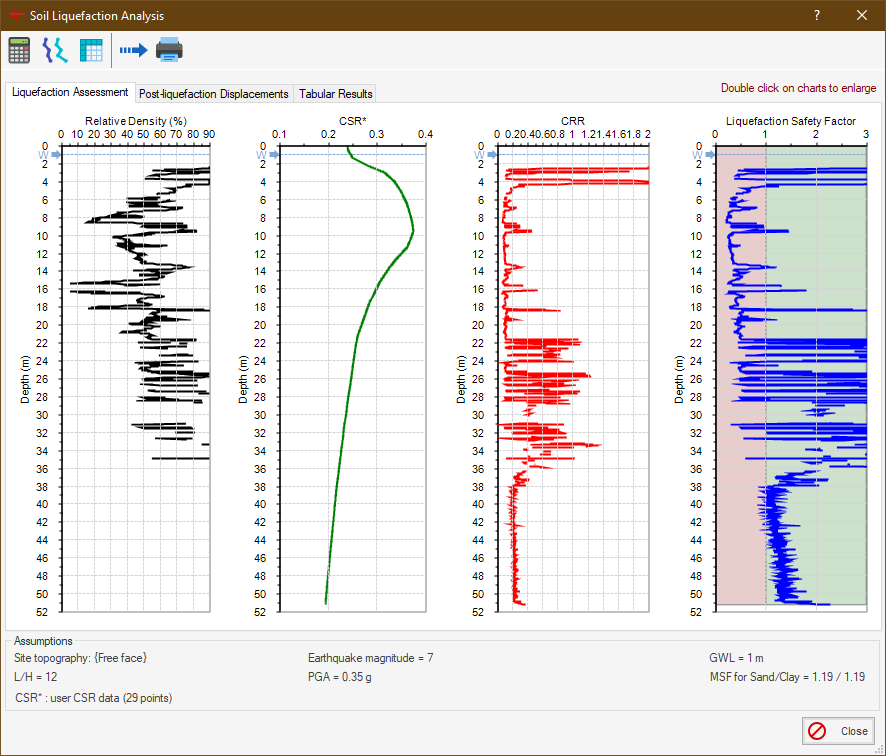Liquefaction Analysis Tool
This tool is used for soil liquefaction analysis based on CPT data. The procedure of liquefaction assessment in NovoCPT, is based on the following two methods:
- Methodology proposed by Robertson (2012) in "Guide to Cone Penetration Testing"
- Methodology proposed by Idriss & Boulanger 2008
The desired method may be selected on Options page.

The details of soil liquefaction analysis at each depth is presented in tabular format:
Sv : Total overburden stress (σv)
S'v : Effective overburden stress (σ'v)
Rd : Stress reduction factor in simplified Seed and Idriss 1971 formula
Dr : Relative density of soil (based on Tatsuoka et al. 1990)
γmax : Maximum shear strain, estimated from Dr and liquefaction safety factor, at each depth
εv : Volumetric strain (for settlement analysis), estimated from Dr and γmax, at each depth (read this article)
Kc : Fines content correction factor (Robertson & Wride 1998) for Qtn
CSR : Cyclic stress ratio, please read this article for more information
CRR : Cyclic resistance ratio (based on Robertson 2009 method), please read more
Safety Factor : Liquefaction safety factor = CRR / CSR * MSF
MSF : Magnitude scaling factor
Lateral Displacement : Accumulation of the Post-liquefaction lateral displacement of the site, estimated based on Zhang, Robertson and Brachman (2004) method (from the bottom of the model -the lowest depth in CPT dataset). Please read this article for more information.
Sr : Residual shear strength
Liquefaction Behavior : Behavior of soil according to Robertson 2009 definition
By default, the minimum required safety factor against liquefaction is assumed to be 1.0 and the region for safety factors less and greater than this value are colored by dark red and dark green on the safety factor chart. To change the required safety factor, use the textbox at the bottom of the page and then press Update button to refresh the charts.
![]() Please notice that liquefaction is only assessed for those soil types that are set in NovoCPT Options page as potentially liquefiable.
Please notice that liquefaction is only assessed for those soil types that are set in NovoCPT Options page as potentially liquefiable.